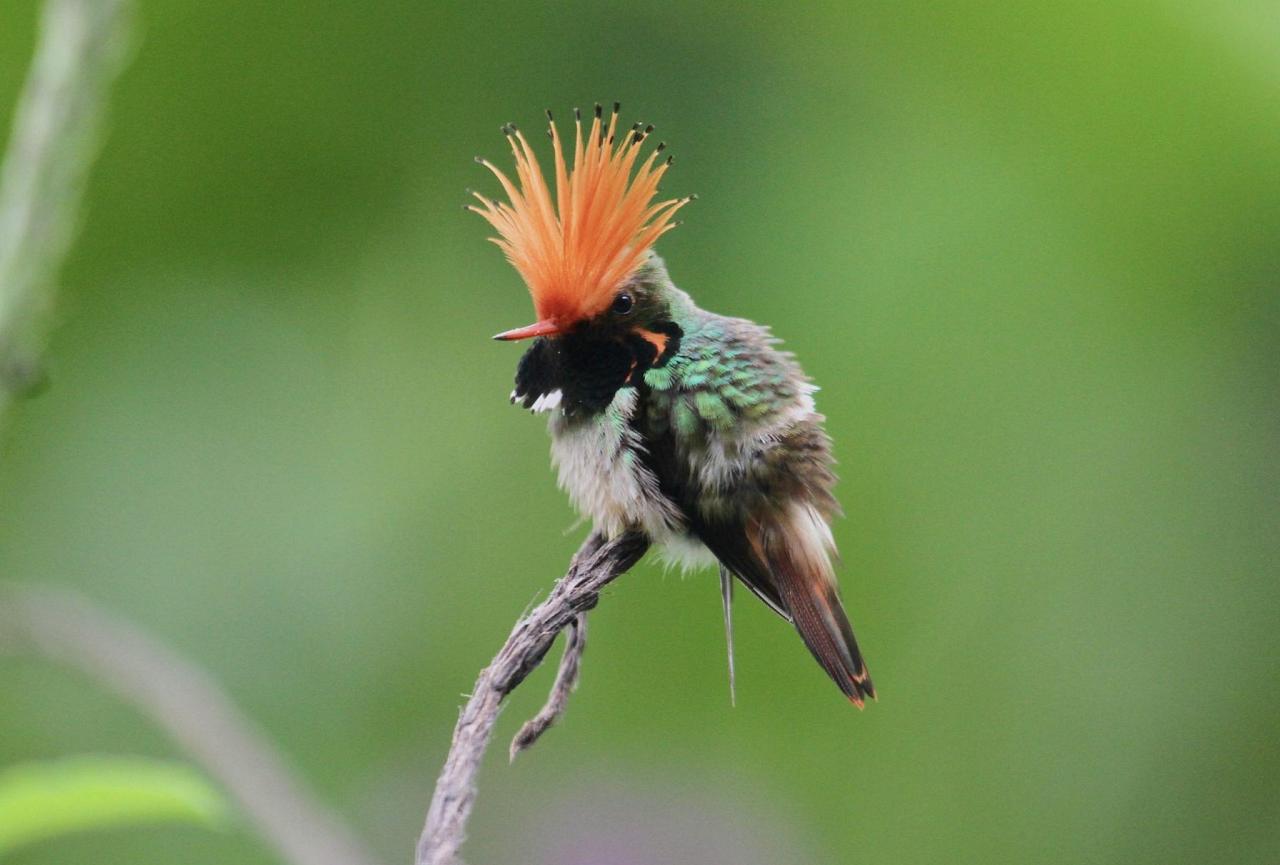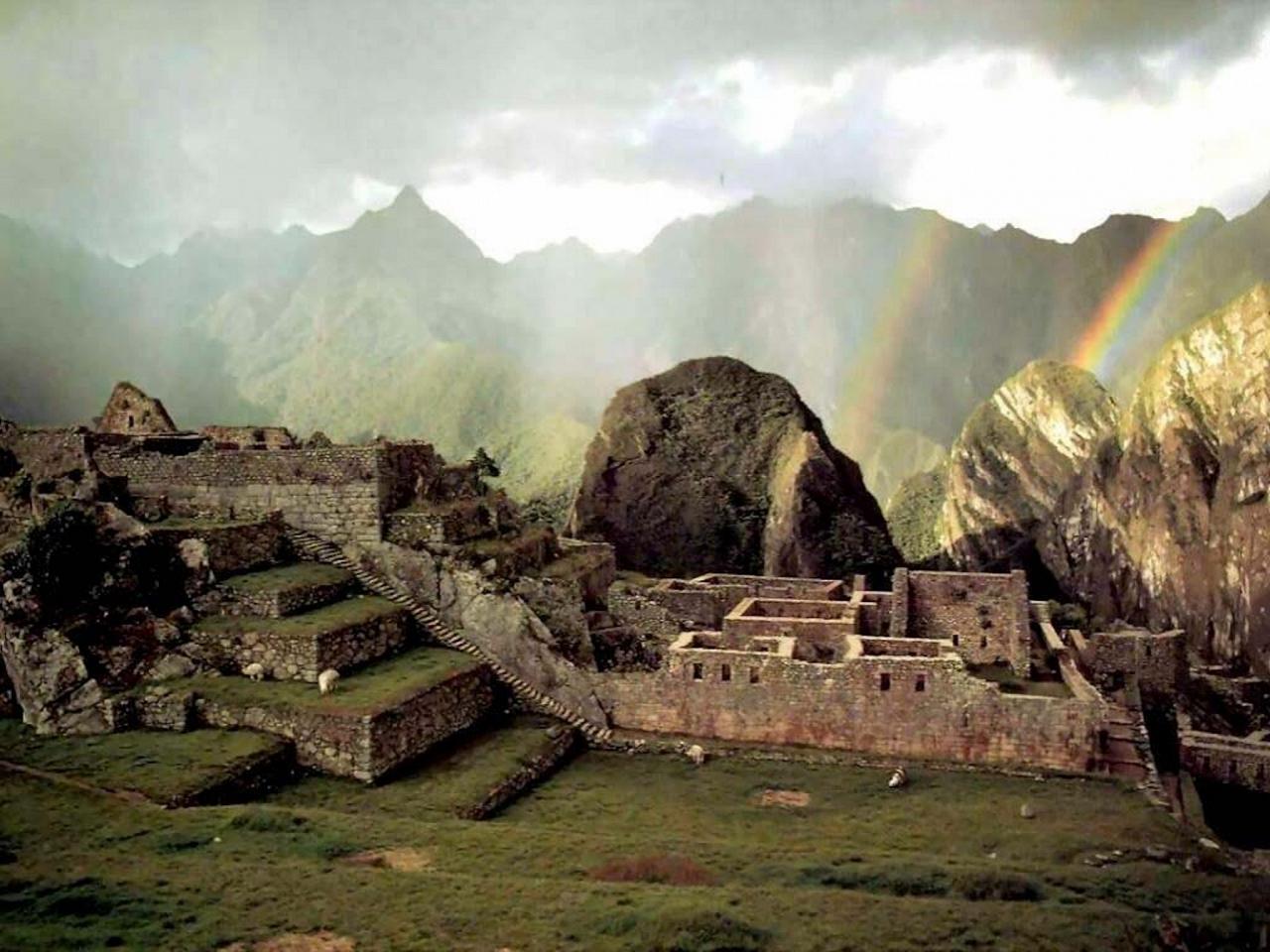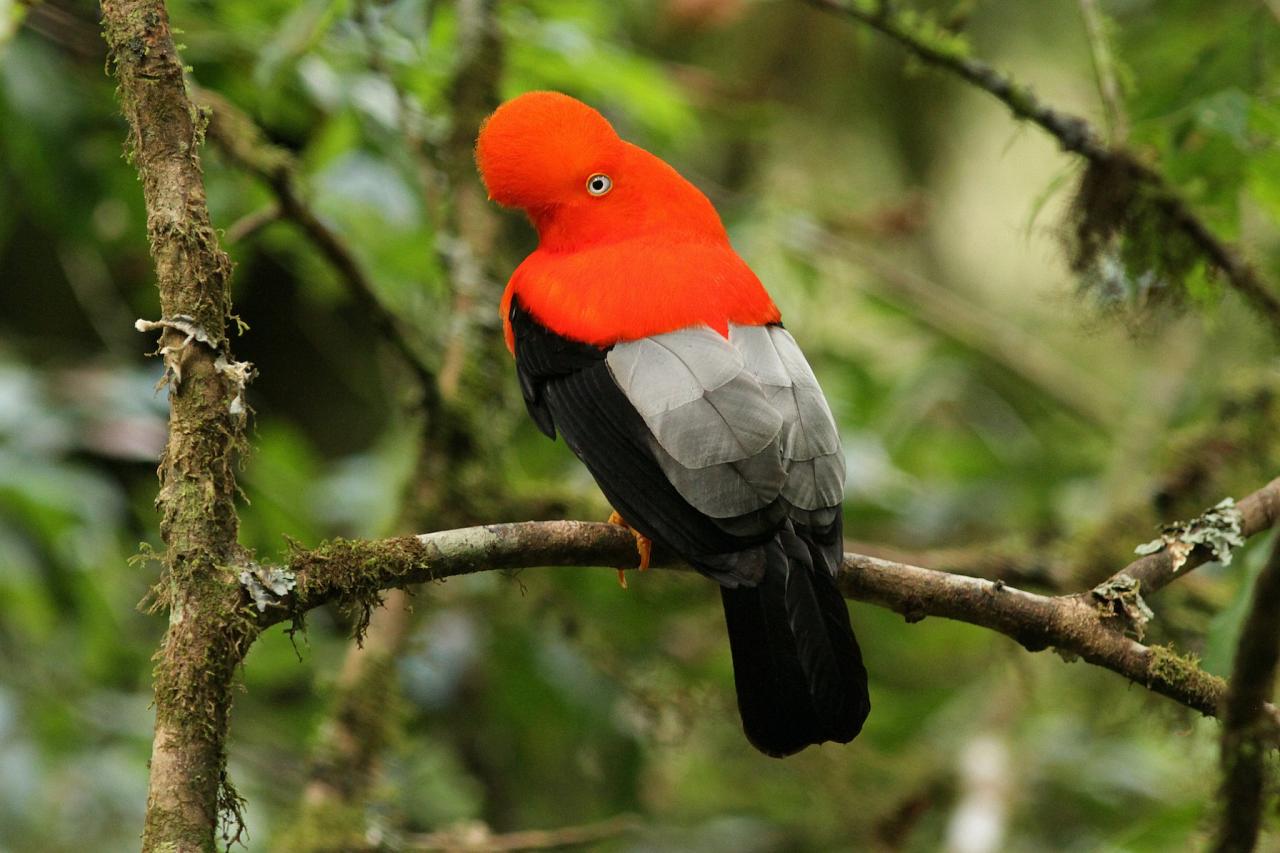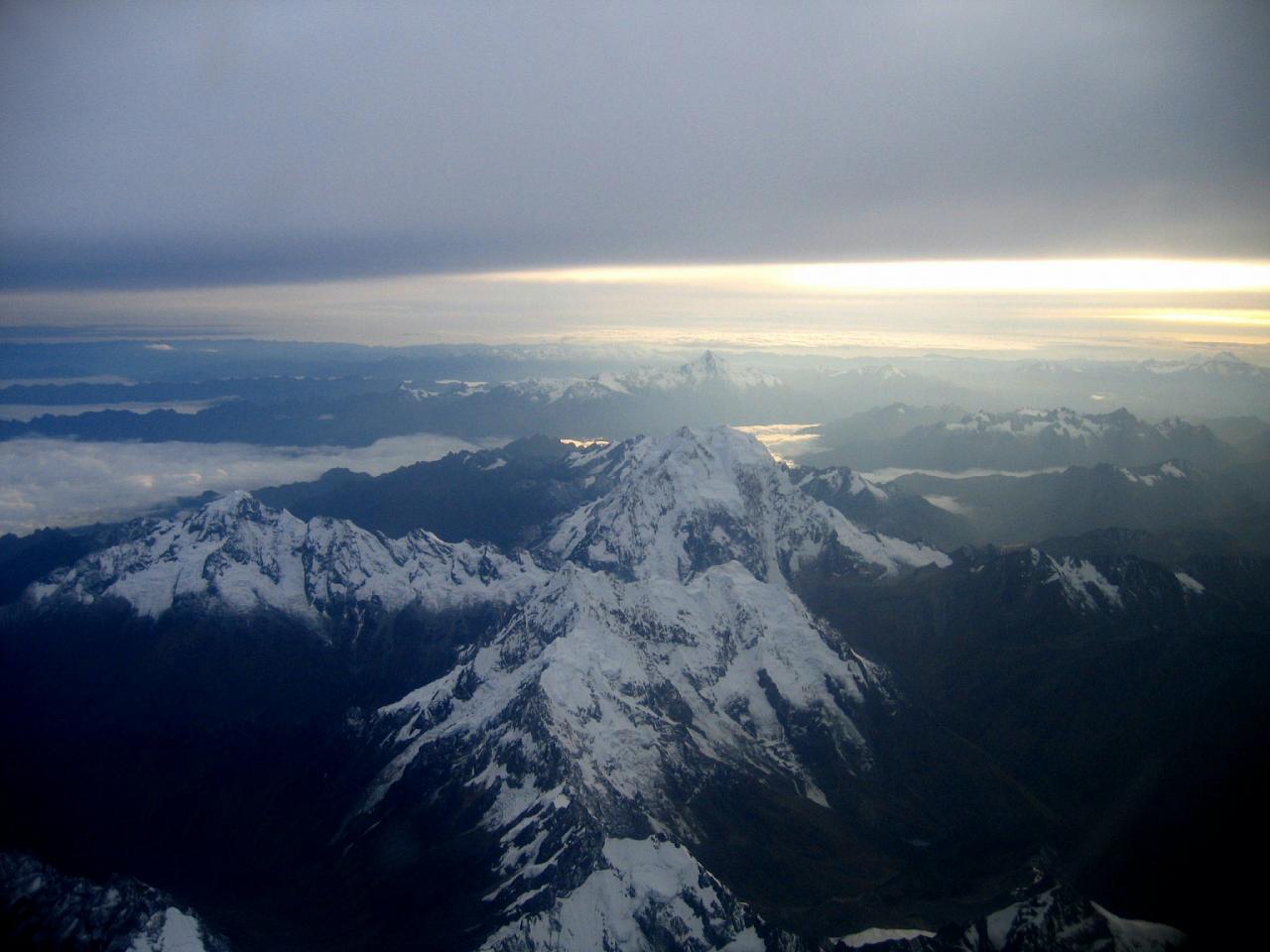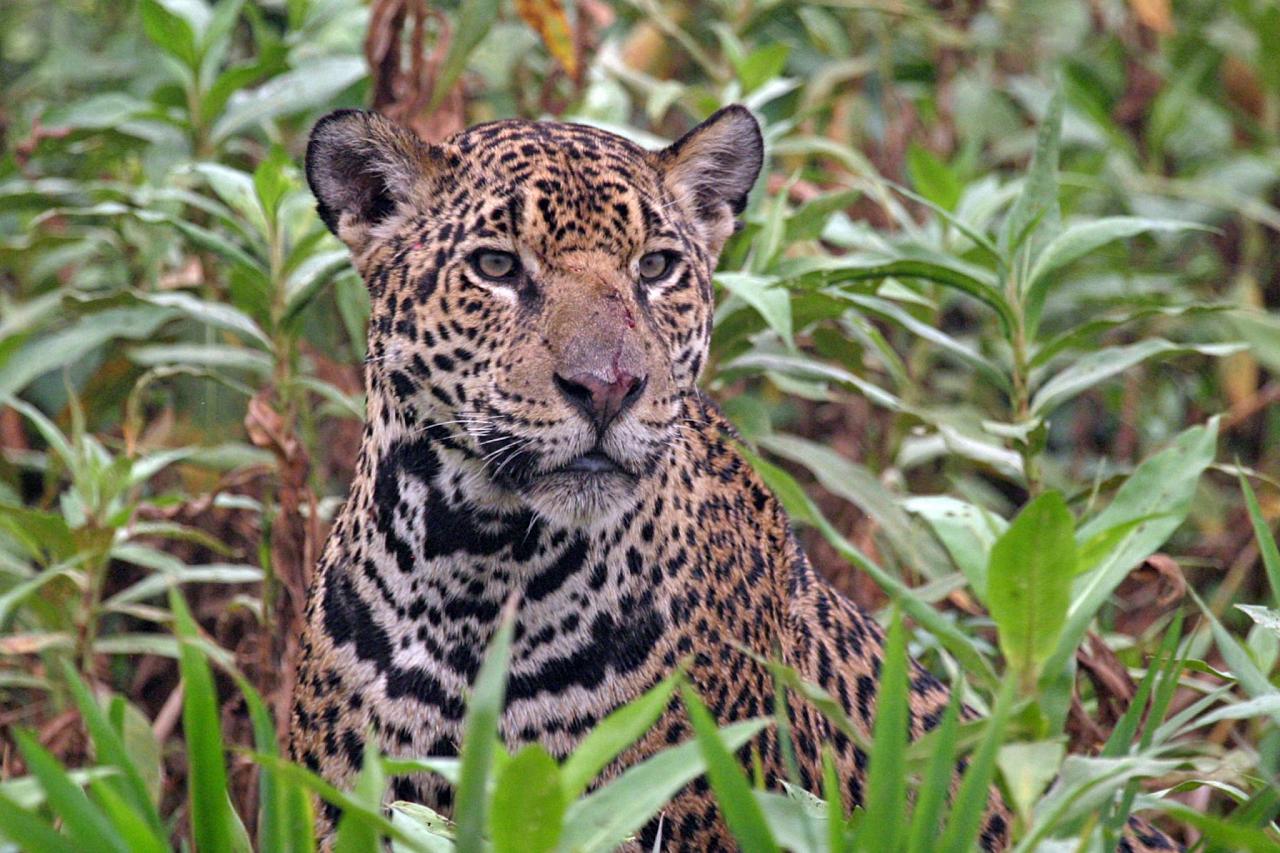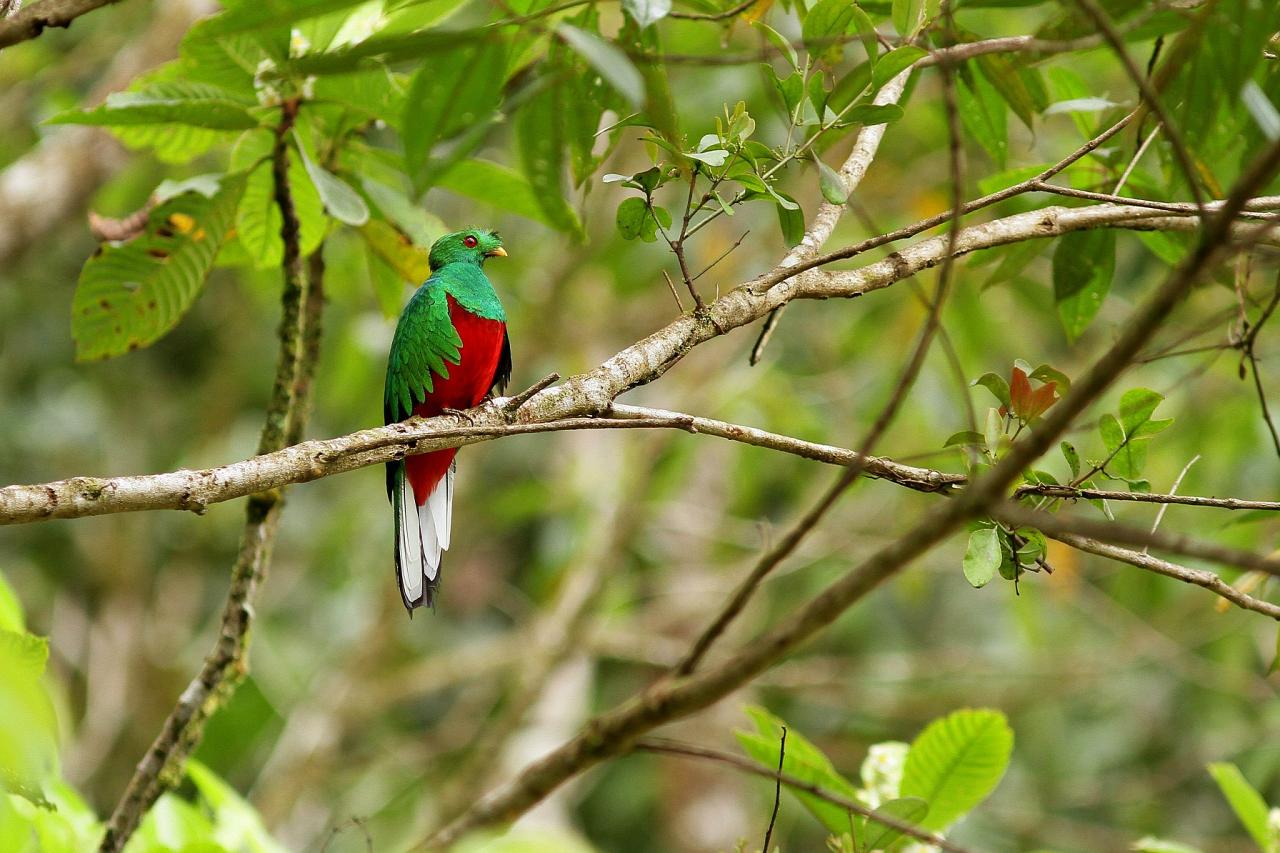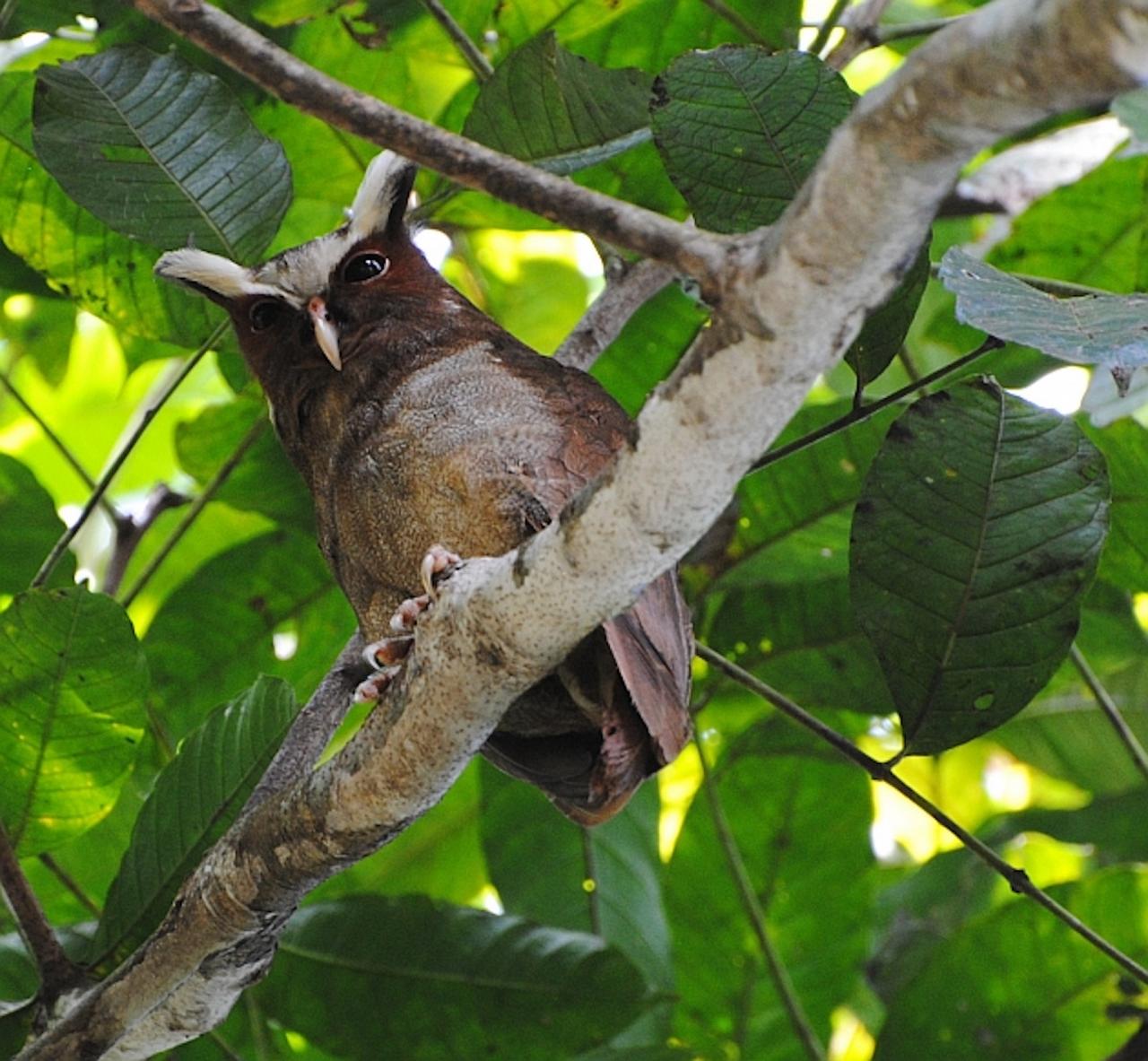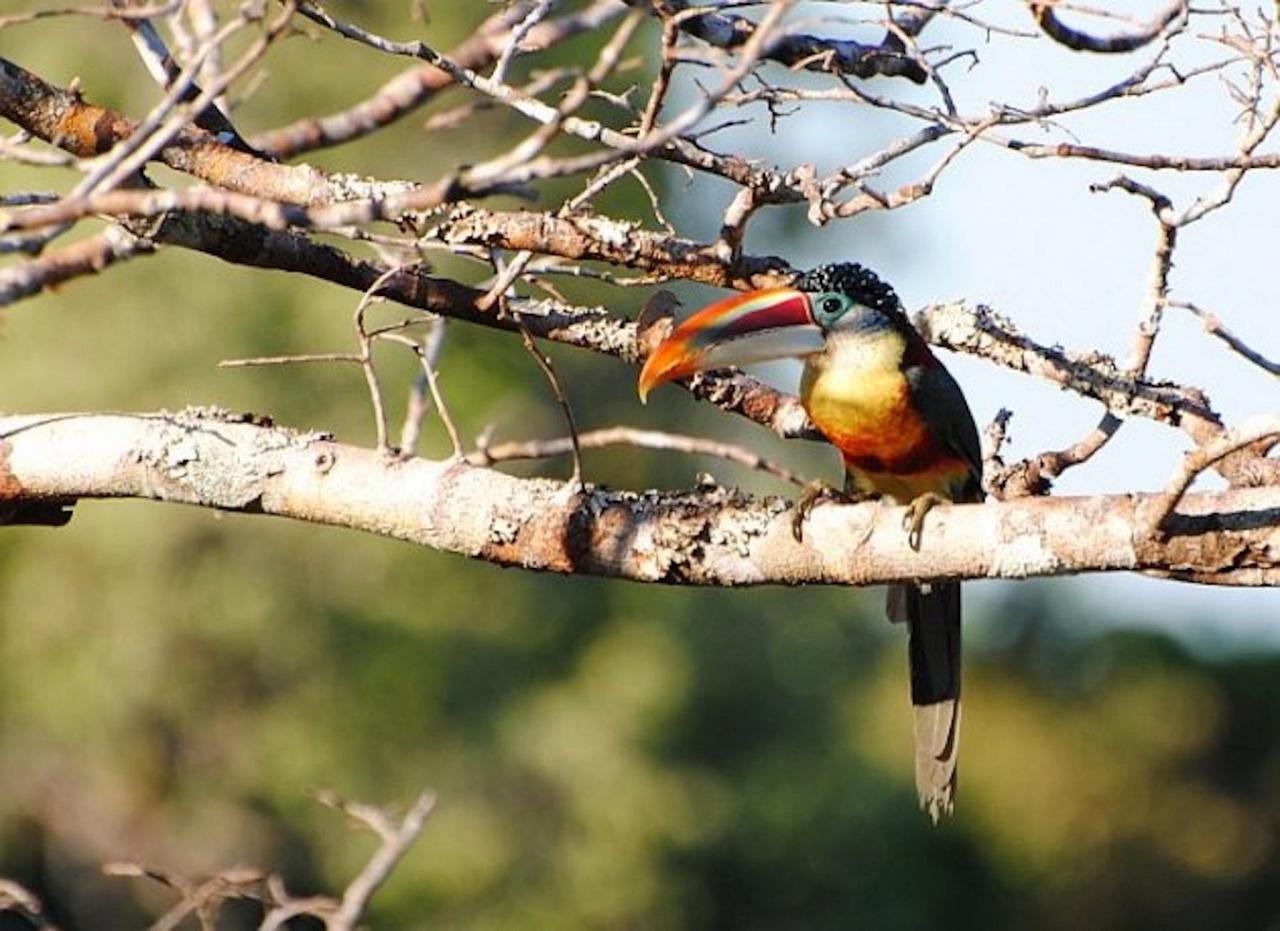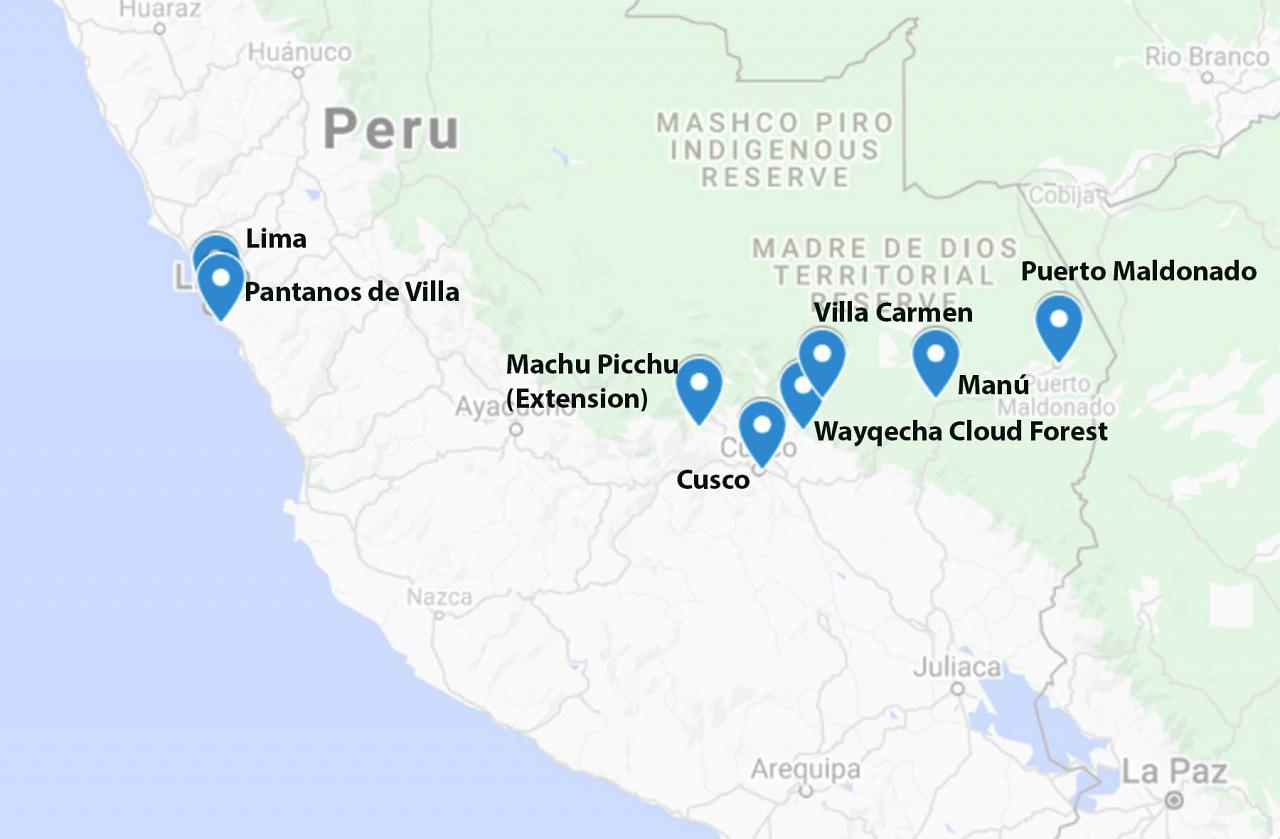- Overview
- Full Itinerary
- Extensions
- Photo Gallery
- Costing
- Travel Details
- Trip Reports
- Guides
- Map
- Know Before You Go
We invite you to join Jennie MacFarland of Tucson Bird Alliance and Peg Abbott of Naturalist Journeys for the most brilliant birding adventure to the heart of Peru, from Cusco to Manu National Park.
Stretching across thousands of square miles on the eastern flank of the Peruvian Andes, Manu National Park and the biosphere reserve that surrounds it encompasses a continuous tract of pristine wilderness that preserves the entire spectrum of Andean slope ecosystems—from high Andean puna grasslands to lowland Amazonian rainforest. Stretching across so many altitudes and habitats, this reserve lays claim to the most diverse fauna and flora of any park in the word: 1000+ bird species, 160 mammal species, and 4,385 plant species have been recorded in its boundaries with more still being discovered. Due to its unmatched biodiversity and pristine natural habitats, it became UNESCO World Heritage Site in 1987. By following the very birdy Manu-Kosnipata Road and staying at lodges at different altitudes, this tour offers a rich transect of all the habitats present in the Manu Biosphere Reserve.
Our tour begins in Lima, where nutrient-rich upwellings from the cold Humboldt Current offer nourishment for teeming seabird colonies that include boobies, cormorants, and penguins. After a short flight to Cusco, we travel across natural high mountain grasslands and fields farmed for centuries in search of endemics like Bearded Mountaineer and Creamy-crested Spinetail. Once we reach the rest of the Acjanaco Pass, above the treeline, the landscape tumbles downward into progressively taller and wetter forest. Our first stop is Wayqechua Biological Station, where we explore misty elfin forests buzzing with high elevation tanagers and hummingbirds. Then we continue to Cock-of-the-Rock Lodge, where lush cloud forests harbor exuberant leks of the Andean Cock-of-the-rock, mixed flocks of technicolor tanagers like Paradise, Saffron-crowned, and Beryl-spangled, and brilliant songsters such as Andean Solitaire and Chestnut-breasted Wren. A bit further down still at Villa Carmen Biological Station, we explore spiney Guadua bamboo and foothill rainforest for the shimmery Bluish-fronted Jacamar, adorable Black-backed Tody-Flycatcher, and skulking Manu Antbird.
Finally, we reach the awe-inspiring Amazonia Rainforest: a habitat layered with diversity, complexity, and sheer beauty. Here, we spend four full days soaking up the spectacle of parrot clay licks attended by hundreds of parrots, visiting quiet oxbow lakes inhabited by prehistoric Hoatzin and elegant Agami Heron, watching for brightly-colored toucans and cotingas from canopy platforms, and seeking out large mammals like Giant Otter and South American Tapir. All in all, this tour covers one of the greatest birding roads in the world.
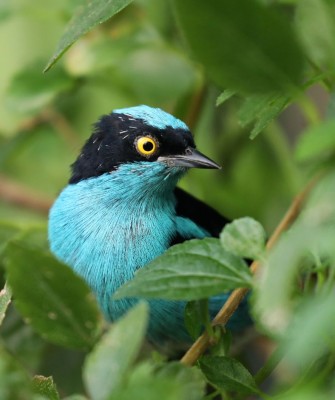
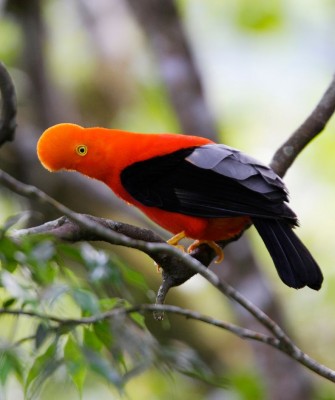
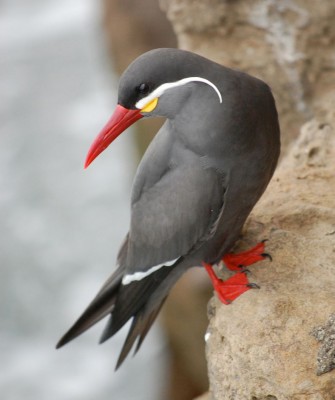
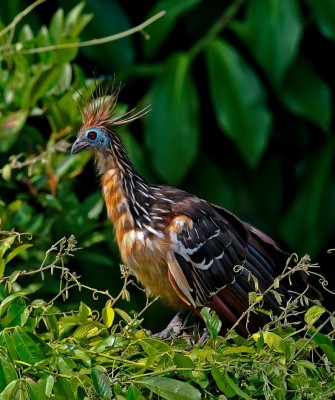
- “I did the Machu Picchu extension of five days. It was packed with great birds, wonderful hotels and food and unforgettable tours of Machu Picchu, Ollantaytambo, and Chinchero. We experienced Inca ruins and history, and local culture. A very rich experience!” —Linda Fuller, 2023 Traveler
- “Great trip for birding…we saw more than 500 species!” — 2023 Traveler
Tour Highlights
- Visit the full spectrum of Andean slope habitats, including puna grasslands, elfin forests, cloud forests and lowland rainforest, each with their own special collection of birds, animals, and plants
- Marvel at the timeless lek display of Andean Cock-of-the-rock, a spectacle of sounds and color
- Enjoy over fifty species of hummingbird on this route with such evocative names as Bearded Mountaineer, Shining Sunbeam, Wire-crested Thorntail, Booted Racket-tail, and Violet-throated Starfrontlet
- Witness the lively congregation of hundreds of parrots, parakeets, and macaws at a clay lick, where these noisy birds feed on the mineral-rich soil
- Seek endemic birds found only in Peru such as Chestnut-breasted Mountain-Finch, Red-and-white Antpitta, and Seaside Cinclodes
- Be in spired by the biological richness of the Manu-Kosnipata Road, a classic birding route that traverses one of the most biodiverse regions in the world.
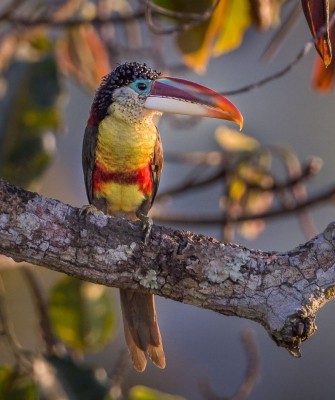
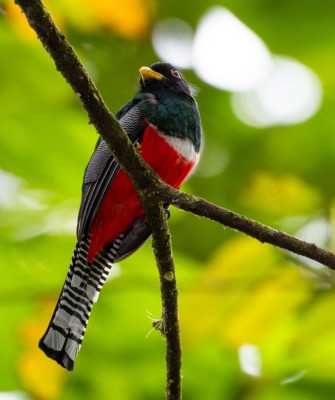
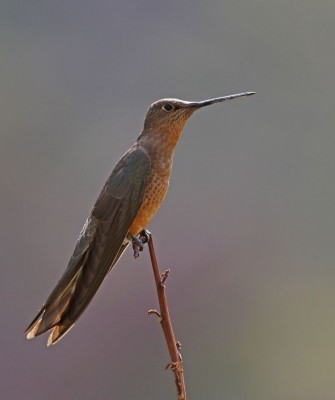
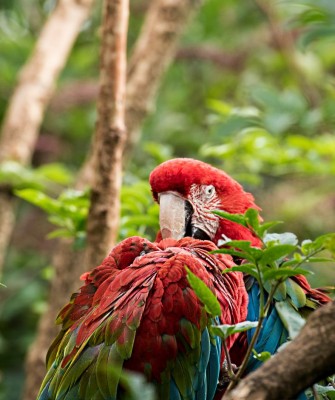
Trip Itinerary
Itineraries are guidelines; variations in itinerary may occur to account for weather, road conditions, closures, etc. and to maximize your experience.
Fri., Oct. 2 Arrivals in Lima
Welcome to Peru! Arrive today in Lima and transfer to your nearby hotel for the night. If your flight arrives at dawn, let us know if you want to book an additional night so you can get right into your room. Rest up for a grand adventure! Those arriving in time can enjoy a casual dinner together at the hotel.
Accommodations in Costa del Sol, Airport at Lima (D)
Sat., Oct. 3 Pucusana & Pantanos de Villa Marshes
Today we drive south of Lima towards Pucusana, a picturesque fishing village located on the shores of a calm bay teeming with seabirds. Enjoy a boat trip around Pucusana Bay to observe the various marine bird species associated with the cold Humboldt Current—nesting Guanay and Red-legged Cormorants, loafing Peruvian Booby and Inca Tern, and maybe even a Humboldt Penguin (not to mention the endemic Seaside Cinclodes). After a Peruvian seafood lunch at our favorite restaurant, we make a stop at the Pantanos de Villa Marshes on the outskirts of Lima. This wetland refuge is a coastal oasis surrounded by desert, harboring elegant Great Grebe, bizarre Peruvian Thick-knee, colorful Many-colored Rush Tyrant, and many others. We return to Lima in time for dinner at our hotel.
Accommodations in Costa del Sol, Airport at Lima (B,L,D)
Sun., Oct. 4 Flight to Cusco | Lake Huacarpay Birding
Today begins with an early morning flight to Cusco where we meet our driver and head off for adventures. Not far out of the city, we enjoy birding at Lake Huacarpay, a lake surrounded by mountains in a rural area. Both the scenery and the birding are excellent here and we added an night at this location so we do not have to rush. We want to move slowly in the high elevation section of the biosphere reserve and surroundings so that you can acclimate. We look for Puna Teal, Puna Ibis, Chiguanco Thrush, Yellow-winged Blackbird, Andean Gull, and more! Slopes of the high elevation lake are clad with shrubs such as the tree tobacco—a plant favored by the Bearded Mountaineer, a spectacularly large and beautiful endemic hummingbird. We may also see Giant Hummingbird on these same slopes, the largest hummingbird of them all.
The inn has full mountain views all around and a South American hacienda feel to it with nice dining and hospitality, recommended by our local agent in Cusco. Enjoy an overview of the Manu National Park that we explore from mountains to lowlands this evening.
Accommodations at Villa Mercedes, Caicay, Peru (B,L,D)
Mon., Oct. 5 Cusco to Wayqecha Biological Station
This morning we get an early start, though the drive is not far to Wayqecha, there is much to see! We hope to bird in some of the high grassland habitat before heading down in elevation. We travel through the valley of Paucartambo, the world’s capital of potato diversity, before reaching the final high pass of Ajcanaco at 12,000 feet. If it’s clear, we are able to look out over the mountains towards the Amazon Basin stretching down below into the distance, as the sun-worshipping Incas did in ancient times. In addition, the dry puna grassland near this last mountain pass is worth a stop for a few specialties such as Line-fronted and Scribble-tailed Canastero, White-browed Conebill, and Moustached Flowerpiercer before descending into the moss-covered elfin forest below. We have lunch along the way.
Once at Wayqechua, there are wonderful bird and hummingbird feeders to attract special species in close. Watch for Amethyst-throated Sunangel, Shining Sunbeam ,and Gould’s Inca. Flocks of Andean Parakeets may be active in the area, as well as flocks of White-collared Jay.
The lodge has individual cabins and a glassed in main building where we dine. It has a wonderful great room feel and one is never out of view of nature!
Accommodations at Wayqecha Biological Station (B,L,D)
Tues., Oct. 6 Full Day at Wayqecha Biological Station
At an elevation of 9,800 feet, Wayqecha Biological Station features montane elfin forest characterized by stunted moss-covered trees, cool temperatures, and persistent fog. Large and colorful tanagers such as Hooded Mountain, Grass-green, and Golden-collared are a feature here, as well as hummingbirds such as Tyrian Metaltail.
After a hot breakfast and coffee or tea, we start early near our lodge in search of these species and others such as the glistening Golden-headed Quetzal and highly-patterned Gray-breasted Mountain-Toucan We should find Rufous-breasted Chat Tyrant, Highland Elaenia, and a host of colorful tanagers, including Golden-collared and Rust and Yellow and Scarlet-bellied Mountain Tanager.
We bird farther up the road a bit where there is a hiking trail from a small ranger’s post. We have our meals at the lodge with time for an afternoon siesta, if you can tear yourself away from the feeders! The food is delicious, as is the local hot chocolate, perfect for the mist and cool temperatures at this elevation.
Accommodations at Wayqecha Biological Station (B,L,D)
Wed., Oct. 7 Wayqecha Biological Station to Cock-of-the-Rock Lodge
As the day warms up, we depart Wayqecha and spend our day gradually descending along the forested mountain road in search of mixed feeding flocks before reaching Cock-of-the-Rock Lodge at approximately 5,000 feet in elevation. We are birding on the main road between Cusco and the lowlands, but there are often long gaps with no vehicles passing. We find Umbrellabirds perches on treetops Andean Guan, Andean Motmot, and a variety of raptors.
Fast-moving mixed flocks of tanagers are a big feature at this elevation, and the forest edge can be teeming with these avian jewels that may include Yellow-throated, Orange-eared, Golden-naped, Blue-necked, Paradise, Golden-eared, Bay-headed, ad more. Other noteworthy denizens of these elevations include Yungas Manakin, Versicolored Barbet, Blue-banded Toucanet, Crested Quetzal, and both Fawn-breasted and Orange-headed Tanagers.
Accommodations at Cock-of-the-Rock Lodge (B,L,D)
Thurs., Oct. 8 & Fri., Oct. 9 Cock-of-the-Rock Lodge
We have two days here, one of the great birding lodges of the world for location and hospitality for sure. Cock-of-the-Rock Lodge, situated about halfway between the Ajcanaco Pass and the Madre de Dios River, sits at a great elevation for both montane and foothill bird species.
One of the great features of this lodge is an active Andean Cock-of-the-rock lek, and we are able to observe the memorable spectacle of their communal display ritual at dawn—a show of both raucous sound and vibrant color. We have a blind reserved for our group and get to take in the spectacle in fine view.
The dining area of the lodge itself overlooks a feeding station that attracts tanagers and barbets, as well as hummingbird feeders that may bring in about a dozen species. Buff-tailed Sicklebill, Sparkling Violetear, Wire-crested Thorntail, the endemic Peruvian Piedtail, and Violet-fronted Woodnymph are all possible. Fruiting trees encourage visits by Orange-belied Euphonia and several tanagers. Russet-backed Oropendola hang from their pendulous nests and several species of primates occur on the grounds. One year we had the treat of seeing a pair of Tayra that were coming in to the feeders.
We have our meals at the lodge and explore the grounds, as well as the road both directions from the main entrance for a very rewarding day. In the evening, night walks may produce sightings of Lyre-tailed Nightjar, Andean Potoo, and Rufescent Screech-Owl.
Accommodations at Cock-of-the-Rock Lodge (B,L,D)
Sat., Oct. 10 & Sun., Oct. 11 Villa Carmen Biological Station
It’s time to head down in elevation! After a morning breakfast accompanied by the ethereal carols of Andean Solitaire and Multicolored Tanager at the fruit table, we depart from Cock-of-the-Rock Lodge and gradually descend to Villa Carmen Biological Station at approximately 1700 feet in elevation. We pay particular attention to the stretch between 5000 and 2000 feet in elevation. The upper tropical zone forests at these altitudes have largely disappeared from much of the Andean slope of South American due to its suitability for cash crops, but these forests remain untouched in this part of Peru. Birds we have seen well on this stretch of road include Lanceolated Monklet, Versicolored Barbet, Slaty Gnateater, Cinnamon-faced Tyrannulet, Black-backed Tody-Flycatcher, Deep-blue Flowerpiercer, Stripe-chested Antwren, and many more.
We arrive at Villa Carmen Biological Station in the afternoon, our home for two full days of birding. Located in the transition zone between montane forest and lowland rainforest, this lodge has an impressive bird list of over 475 species. The extensive trail system transects a mosaic of habitats, including foothill rainforest, secondary forest, pastures, and fish ponds, which we have the opportunity to explore. Flowering bushes attract various hummingbirds typical of lowland rainforest, including Blue-tailed Emerald, Gray-breasted Sabrewing, and Fork-tailed Woodnymph—maybe even Rufous-crested Coquette. Extensive stands of Guadua bamboo typical of the foothill forest here are home to several rare and elusive specialists: Bamboo Antshrike, Dusky-cheeked Foliage-gleaner, Peruvian Recurvebill, Flammulated Pygmy-Tyrant, and Large-headed Flatbill.
We have two nights here, and while in the area we visit two relatively new hummingbird gardens that were incredibly productive last year. With wonderful conservation-minded hosts, we get to see species up close and personal and help protect habitat for them by doing so.
In addition, we also do some night birding here, and we have seen the following in the past: Common Potoo, Tawny-bellied Screech-Owl, Black-banded Owl, and Ladder-tailed Nightjar.
Accommodations at Villa Carmen Lodge (B,L,D)
Mon., Oct. 12 Atalaya | Boating on the Madre de Dios!
We leave this magical place only reluctantly, but yet more awaits us in the Amazon Rainforest!
After a very early breakfast, we leave Villa Carmen Lodge to continue on our journey for about an hour down to the port of Atalaya, where we board a motorized canoe. Along the way we take some breaks at small local lodges where we stretch our legs and search for Amazonian Forest species, including the amazing Hoatzin. These unique birds primarily feed on young leaves and buds, which are digested in the crop with the aid of bacteria and microbes—in effect, a feathered cow.
We head down the Alto Madre de Dios River in our motorized canoes to its confluence with the Manu River (about 4 hours). The water from the mountains here is relatively clear, as it winds past isolated Andean ridges and picturesque rainforest landscapes dotted with blazes of yellow and red flowering trees. However, once we pass the village of Boca Manu and the confluence of the Alto Madre de Dios River with the Manu River, the water quickly becomes brown and laden with silt. The River slows to a lazy pace, piling up impressive sandbars that are home to charismatic Pied Lapwing, bizarre Horned Screamer, rare Orinoco Goose, and colonial Sand-colored Nighthawk. These boat rides through Amazonian Rainforest are usually exciting and productive, giving us our best chances at spotting raptors such as Great Black Hawk and Ornate Hawk-Eagle, large mammals such as South American Tapir and Capybara, and gaudy parrots such as Blue-and-yellow and Scarlet Macaws.
We plan to arrive at the Tambo Blanquillo Lodge in the late afternoon. Accommodations at here are simple but lovely and immersive bungalows, each of which have en-suite baths and the adjoining dining and bar complexes are spacious.
Accommodations at Tambo Blanquillo Lodge (B,L,D)
Tues., Oct. 13 – Thurs., Oct. 15 Tambo Blanquillo Lodge
We plan to spend three full days birding at the Tambo Blanquillo Lodge and surrounding area. There are multiple day trip sites for us to see a host of amazing species, as well as trails on the lodge grounds.
One of the highlights of any trip to Amazonia is a visit to a parrot clay lick, where one has the opportunity to observe the spectacle of hundreds of parrots and macaws feeding on mineral-rich soil. We spend one morning at one of these clay licks, enjoying this magical show up close from strategically placed blinds. Species we may see here include Orange-cheeked, Blue-headed, Mealy, and Yellow-crowned Parrots, Tui and Cobalt-winged Parakeets, and Blue-and yellow and Scarlet Macaws.
During the course of the following days, we explore various microhabitats found within the Amazon Rainforest, where trails are mostly flat, clean, and wide. These microhabitats include extensive varzea (seasonally flooded with white water) terra firme (forest that never floods), and large stands of Guadua bamboo. We explore different lagoons by boat, with excellent chances for seeing Giant Otter. We climb up a very stable canopy platform, a tall structure that gives us the ability to look over the forest canopy, providing some of the most exciting birding Amazonia has to offer. Few experiences can beat a morning vigil from the top of a canopy tower, with the morning mist rising above the forest—flocks of commuting macaws, calling trogons, clownish aracaris, stolid raptors, glowing cotingas, and gurgling oropendolas all compete for attention. We are literally wrapped up in the arms of a giant tree while birdwatching!
But there is so much more here! By exploring stands of Guadua bamboo, we might be able to observe Rufous-headed Woodpecker, Manu Antbird, Dusky-tailed Flatbill, and White-lined Antbird. By quietly walking on the forest floor of both terra firme and varzea forest, we might observe Pavonine Quetzal, Pale-winged Trumpeter, Razor-billed Curassow, Purus Jacamar, Banded Antbird, Royal Flycatcher, Musician Wren, Collared Puffbird, and many others. We are on the lookout for mixed feeding flocks as well, composed mostly of antwrens, antshrikes, greenlets, woodcreepers, and flycatchers, which are fast moving and potentially challenging, but incredibly rewarding.
Optional owling sessions in the evenings can also be productive, and we have the potential to see Crested and Spectacled Owls, Great and Long-tailed Potoos, and Silky-tailed Nightjar—along with a variety of insects, frogs, and mammals.
Accommodations at Tambo Blanquillo Lodge (B,L,D)
Fri., Oct. 16 By River to Puerto Maldonado
This is our last morning at the Manu Wildlife Center, with perhaps one last look at the parrot clay lick before transferring by boat down the Madre de Dios River to the town of Boca Colorado. As with any journey by boat along the Amazon Basin, there is always the potential for memorable sightings such as a Giant Otter family and perched Ornate Hawk-Eagle, or a pair of Sunbittern. Leaving our boat at Boca Colorado, we take a one-hour ride in local transport to the Inambari River where our bus is waiting. This is a full day journey, and it’s a bit of a shock to be back on paved roads and in a modern city! To soften the blow, we’ve booked some lovely riverside lodgings where nature is still the main attraction!
This evening we gather to recount highlights of our amazing journey and to tally up our sightings.
Accommodations at Hotel Enai, Puerto Maldonado (B,L,D)
Sat., Oct. 17 Tambopata Boardwalk Birding & Departures or Machu Picchu Extension
Those departing today from the main tour will likely have flights from Lima around midnight tonight. Thus, we have the morning to birdwatch and our first choice is a boardwalk trail downriver at Tambopata Reserve. We make an effort to see a variety of birds that have colonized the area due to human disturbance: Red-breasted Blackbird, White-tailed Kite, Grassland Sparrow, Black-faced Tanager, Barred Antshrike, and others. Stands of Buriti Palm (Mauritia flexuosa) give us chances at specialists such as Sulphury Flycatcher, Point-tailed Palmcreeper, and Red-bellied Macaw. We also search for the range-restricted White-throated Jacamar before flying back to Lima where you can catch your international flights. Dinner is at your leisure either at the airport or at the Cosa del Sol just across the street. (B)
Those on our fabulous extension to Machu Picchu will travel onward to Cusco. (B)
Machu Picchu Post-Tour Extension
Itineraries are guidelines; variations in itinerary may occur to account for weather, road conditions, closures, etc. and to maximize your experience.
Sat., Oct. 17: Fly to Cusco
Say goodbye to fellow travelers who must depart today, and fly to Cusco.
Our hotel tonight is replete with gardens and birds attracted by the profusion of flowers. Enjoy a lovely evening with some great local food and prepare for your train ride tomorrow from this location.
Accommodations at Pakaritampu Hotel (B,L,D)
Sun, Oct. 18: Cusco | Machu Picchu
We take the train from Ollantaytambo to Machu Picchu this morning and spend the full day exploring. A local guide shares expertise about the site. We have our lunch at the Sanctuary hotel so we are not rushed. After the guided walk you can enjoy some birding (must find Inca Wren!) or walk among the ruins. Shuttle buses run often to the town of Aquas Calientes, so you can come down at the time you wish. Some like to do a bit of shopping or have a coffee or ice cream while walking through town.
Accommodations at Inkaterra Hotel (B,L,D)
Mon., Oct. 19: Morning Birding | Train to Cusco via Ollantaytambo
Our hotel offers terrific birding and we explore the grounds this morning. The Urubamba River runs through the property—watch for White-capped Dipper and Torrent Duck!
This afternoon we board the train back to Cusco, stopping en route to explore the ruins at Ollantaytambo.
Accommodations at Novotel Hotel (B,L,D)
Tues., Oct. 20: Cusco | Lima | Departures
This morning we enjoy a Cusco city tour to learn about this special city’s history and take in the fascinating architecture. We, of course, watch for birds in the parks and while we enjoy our lunch. We have late afternoon flights back to Lima. Most flights from Lima depart around midnight, but if yours is a morning flight, we can arrange a hotel for you this evening (additional cost). (B,L)
Cost of the Journey
The cost of the main tour is per person based on occupancy: $7390 DBL / $8290 SGL, from Lima, Peru. This cost includes all accommodations, meals as specified in the itinerary, internal flights, professional guide services, other park and program entrance fees, and miscellaneous program expenses. Cost of the Machu Picchu extension is per person, based on occupancy: $2995 DBL / $3585 SGL.
The tour cost does not include round-trip transportation from your home city to Lima, optional activities, or items of a personal nature such as laundry, telephone charges, maid gratuities, or beverages from the bar.
Gratuities: Tipping throughout the tour is at your discretion. Some guidelines follow: At larger (mostly city) hotels, tip maids and bar service as you would at home. At eco-lodges, there is typically a staff tip box in a public area; the going rate per person is $6-$10 a day, which is shared among staff for maid service, and general staff service at the lodges. Gratuities for group meals are already included. Your Naturalist Journeys host will take care of smaller tips such field trip services by boat drivers, night drive outings, single activities. Transfer (airport shuttle) driver: US $2.00 - $3.00 per person. Hotel & international airport bellmen: US $1.00 per suitcase. Your additional tip is encouraged for birding tour guides and drivers who are with you for several days or the full trip; $10-$15 per day per guest is standard for guide service, and half that for a driver (that is not a guide). If you have more than one local guide at a location, they will share the daily amount. We encourage
Travel Details
Please plan to make air travel plans only after the minimum group size has been met. We will send you a confirmation email as soon as the trip has been confirmed.
Arrival and Departure Airport: Jorge Chávez International (LIM) in Lima
Arrival Details: Plan to arrive October 2, 2026, at your leisure
Departure Details: Plan flights to depart October 17, 2026, after 10 PM. We have a flight back to Lima that arrives around 7:00 PM. Many flights to the US leave around midnight.
Extension Departure Airport: Jorge Chávez International (LIM) in Lima
Extension Departure Details: Plan flights to depart October 20, 2026, after 10:00 PM. We have a flight back to Lima that arrives around 7:00 PM. Many flights to the US leave around midnight.
Travel Tip: If you arrive early to rest up from your travels or to explore Lima, we can book you a room at the Costa del Sol, which is our first night tour hotel.
Entry Requirements: See "Essential Information" section under the "Know Before You Go" tab.
Browse below for trip reports and species lists from past versions of this and other tours from this destination.
Birding & Archeology
- July 2025
Peru
Birding & Archeology
- July 2025
Cusco to Manu
- November 2018
- October 2022 (Machu Picchu Extension List)
- October 2023
Northern Peru
- July 2019
- July 2022
- October 2022
- July 2023
-
Jennie MacFarland — Tucson Bird Alliance

Jennie is a nearly life-long Arizonan that loves exploring different habitats in Southeast Arizona. Birding is an integral part of her social life and work life and much of her free time is spent in the field birding or learning more about birds and their ecosystems. As Director of Bird Conservation for Tucson Bird Alliance, Jennie coordinates the Arizona Important Bird Areas Program and other bird survey conservation projects. She is also the coordinator for the Tucson Bird Count and organizes several large scale community science efforts in Southeast Arizona each year including Elegant Trogon surveys of five Sky Island mountain ranges, Western Yellow-billed Cuckoo surveys and the Desert Purple Martin Project. Jennie also enjoys sharing the amazing bird life of Southeast Arizona and amazing work of Tucson Bird alliance and frequently gives presentations and online talks on various subjects. Jennie is the Director of Bird Conservation for Tucson Bird Alliance.
Other trips with Jennie MacFarland — Tucson Bird Alliance
-
Peg Abbott

Peg Abbott is the owner and lead guide of Naturalist Journeys, LLC. She has been designing, guiding, and organizing natural history tours for more than 25 years, working for the National Audubon Society and other organizations before launching Naturalist Journeys, LLC in 1998. Her work has taken her from Alaska to Africa and Argentina, as well as many other locations around the world. She has conducted research on several bird and mammal species and keeps a close interest in Yellowstone and Mexican wolf reintroduction projects. Her interests include all aspects of natural history and geology. After 20 years in and around the Yellowstone area, Peg relocated in 2003 to the birding mecca of Portal, AZ.
Photo credit: Carol Simon
Other trips with Peg Abbott
-
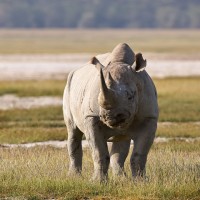 Tanzania: Wildlife & Birding Safari FULL - Ask us to put you on the list for 2027.February 9 - 22, 2026, w/Amboseli & Nairobi National Parks extension
Tanzania: Wildlife & Birding Safari FULL - Ask us to put you on the list for 2027.February 9 - 22, 2026, w/Amboseli & Nairobi National Parks extension -
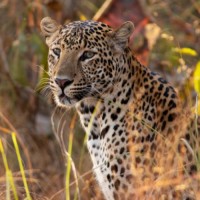 Big Cats & Breathtaking Birds of India FULL - Check out Island of Wonder: Birds & Nature of Sri Lanka!March 9 - 26, 2026, w/Pallas's Cat extension
Big Cats & Breathtaking Birds of India FULL - Check out Island of Wonder: Birds & Nature of Sri Lanka!March 9 - 26, 2026, w/Pallas's Cat extension -
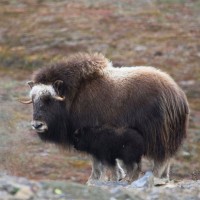 Nome Sweet Nome! FULL - Check out Alaska’s Northern Passages & Glacier Bay!May 28 - June 4, 2026
Nome Sweet Nome! FULL - Check out Alaska’s Northern Passages & Glacier Bay!May 28 - June 4, 2026 -
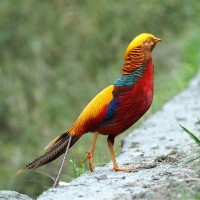 China’s Sichuan Basin & Tibetan Plateau FULL - Check out Thailand: Birding & Nature!June 11 - 26, 2026
China’s Sichuan Basin & Tibetan Plateau FULL - Check out Thailand: Birding & Nature!June 11 - 26, 2026 -
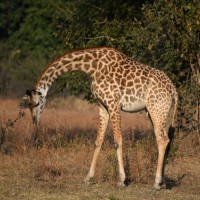 In-Depth & Incredible Africa: Botswana & Zambia FULL - See our Enchanting Okavango tour in August!July 9 - 27, 2026
In-Depth & Incredible Africa: Botswana & Zambia FULL - See our Enchanting Okavango tour in August!July 9 - 27, 2026 -
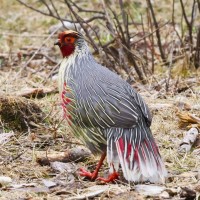 Biodiverse Bhutan: Birds, Mammals & BeyondNovember 6 - 21, 2026, w/Panna Tiger Reserve extension
Biodiverse Bhutan: Birds, Mammals & BeyondNovember 6 - 21, 2026, w/Panna Tiger Reserve extension -
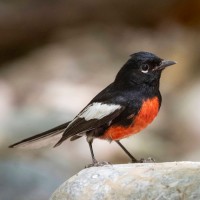 Arizona: New Year’s Birding Blitz December 29, 2026 - January 4, 2027
Arizona: New Year’s Birding Blitz December 29, 2026 - January 4, 2027
-
Essential Information +
Pace & Protocols +
Packing List +
Suggested Reading List +
Useful Links +
Photo credits: Banners: Llamas at Machu Picchu (NJ Stock), Parrots on Clay Lick (NJ Stock), Rufous-crested Coquette (NJ Stock), Scarlet-bellied Mountain Tanager (NJ Stock), Bluish-fronted Jacamar (NJ Stock), Machu Picchu (NJ Stock), Red Howler Monkey (NJ Stock), Black-throated Flowerpiercer (Miguel Lezama), Crested Quetzal (Miguel Lezama) Thumbnails: Black-faced Dacnis (NJ Stock), Andean Cock-of-the-rock (NJ Stock), Inca Tern (NJ Stock), Hoatzin (NJ Stock), Curl-crested Aracari (NJ Stock), Collared Trogon (NJ Stock), Giant Hummingbird (NJ Stock), Red & Green Macaw (NJ Stock) Rufous-crested Coquette by Barry Ulman, Machu Picchu, Naturalist Journeys Stock; Andean Cock-of-the-rock by Miguel Lezamas, Flight to Cusco, Naturalist Journeys Stock; Jaguar by Peg Abbott; Crested Quetzal by Miguel Lezamas; Crested Owl by Carlos Sanchez; Curl-crested Aracari by Carlos Sanchez.



